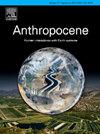Understanding human-environment interrelationships under constrained land-use decisions with a spatially explicit agent-based model
Abstract
Human-environment interactions drive the land-use dynamics of the terrestrial surface. Worldwide, land-based environmental conservation efforts and agricultural preservation regulations are often concurrent. Complex social-ecological feedback within the coupled natural and human systems nevertheless confounds their effects. Drawing on population-level data for a township encompassed by a national nature reserve, this study applies a spatially explicit agent-based model to understand human-environment interrelationships with household land-use decisions about cropland abandonment restricted by the agricultural preservation rule. Results show that labor migration and cropland abandonment involve feedback loops that exhibit nonlinear effects. The availability of household labor and the amount of cultivated land mediate these effects. The land-use decisions of the farm households are sensitive to the relaxation of the abandonment restriction. The prevalence of cropland abandonment in extent and size increases prominently as the restriction rule begins to relax. The model shows a clearly emerging spatial pattern of an increasing likelihood of cropland abandonment with the relaxed restriction. Abandonment is more likely on dryland parcels and parcels at higher elevations, steeper slopes, and in proximity to forest areas. The shifted distributions of cropland parcels by their biophysical and geographical features from the baseline scenario (full restriction) to the experimental scenario (complete relaxation) also demonstrate these trends. Targeting cropland parcels bearing high risks of abandonment can improve the cost-effectiveness of implementing forest restoration policies while prioritizing those with low risks for agricultural stabilization. The agent-based model is useful for explaining the underlying drivers of land change involving human decision-making. It also suggests implications for balancing trade-offs between environmental conservation and agricultural production.

 求助内容:
求助内容: 应助结果提醒方式:
应助结果提醒方式:


